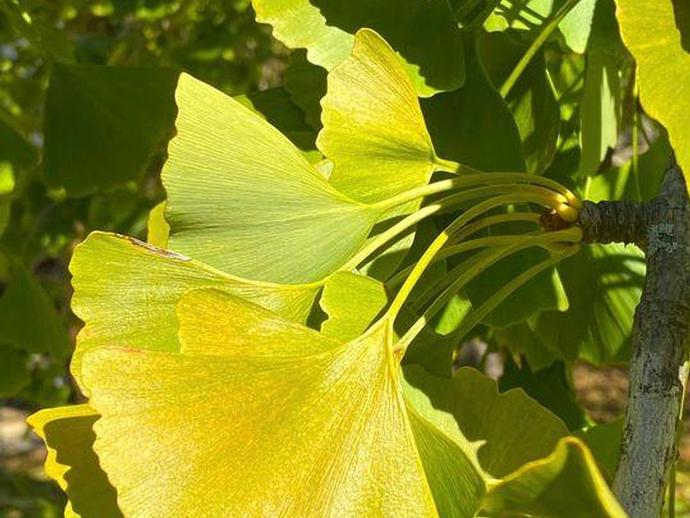November 8, 2021
Ben here with the Monday edition of #BenInNature presented by our friends at Carter Bank & Trust!
This is Ginkgo biloba, commonly known as the ginkgo tree, and there's nothing else quite like it! Ginkgo is easy to identify because it's the only seed plant with fan-shaped leaves that have veins radiating out into the leaf blade. It's the last living species within the order Ginkgoales, and the first examples of the genus Ginkgo appeared during the Middle Jurassic period! As flowering plants began to appear, all of the other members of the order began to disappear, and by the end of the Pliocene, only Ginkgo biloba remained. This makes the ginkgo tree a famous example of a so-called "living fossils!"
Ginkgo was once very widespread, but two million years ago, its range was restricted to a small area of China. However, it was one of the earliest species of trees to be cultivated and spread by man, and it is once again widespread. In fact, there's some debate as to whether any wild ginkgo populations still exist; there are two small populations of trees in eastern China's Zhejiang province that may be wild, but their genetic uniformity suggests that they were possibly planted and cultivated by Chinese monks over a period of 1,000 years! What is known is that when ginkgo trees do occur in the wild, they're found infrequently.
You might have seen Ginkgo biloba on the store shelves; ginkgo supplements derived from the tree's leaves have long been touted as a memory enhancer. While there's no scientific evidence that ginkgo supplements enhance memory, there are a host of side effects and negative drug interactions that can occur if you consume ginkgo to excess. It's better to just admire these ancient trees for their beauty rather than their medical properties.
If you'd like to see a ginkgo up close, simply take a trip to VMNH! We have several planted along the right side of the museum.
ABOUT #BenInNature
Social distancing can be difficult, but it presents a great opportunity to become reacquainted with nature. In this series of posts, Administrator of Science Ben Williams ventures outdoors to record a snapshot of the unique sights that can be found in the natural world. New updates are posted Monday - Friday, with previous posts highlighted on the weekends. This series of posts is made possible thanks to the support of VMNH Corporate Partner Carter Bank & Trust (www.cbtcares.com).
NATURE PHOTO IDENTIFICATIONS
If you discover something in nature that you would like help identifying, be sure to message us right here on Facebook with a picture (please include location and date of picture) and we'll have our experts help you identify it!

 Hours & Admissions
Hours & Admissions Directions
Directions

